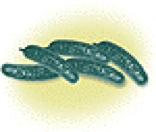At the beginning of America’s Industrial Revolution the City of Pittsburgh produced a group of remarkable leaders. They made their fortunes in coal and coke, iron and steel, aluminum and oil, glass, rails and heavy machinery. Carnegie, Frick, Westinghouse, and Mellow were the architects of our material progress. However, it was Henry John Heinz who founded a giant corporation based on feeding people. For 50 years he was the dominant force in developments that changed agricultural practices, the processing of foods, and the kitchen habits of the nation. If it hadn’t been for H. J. Heinz, perhaps we would still be eating bread and potatoes seven of eight months of the year.
Living in Sharpsburg, a small town on the Allegheny River six miles above Pittsburgh, Henry began, at the age of 12, to peddle the excess produce of the family garden to his neighbors, first in a hand basket, then in a cart, and eventually graduating to a horse and wagon. In 1869, at the age of 25, Henry J. Heinz and L. C. Noble founded a company that specialized in horseradish, the pungent white root that was consumed in vast quantities because it sharpened the appetite, made dull food palatable and supposedly possessed medicinal qualities, especially for grippe and catarrh. Horseradish had always in green bottles, but Henry J. put his in clear glass so that the customer could see that no leaves, no wood fiber, no turnip fillers had been added.
By 1875 the Heinz and Noble Company has one of the country’s leading producers of condiments. They had moved from the two-story Sharpsburg house that served as their headquarters and manufacturing center (it is now enshrined in Henry Ford’s Greenfield Village, Dearborn, Michigan) to an office and storeroom in Pittsburgh. The company had the annual capacity of 3,000 barrels of sauerkraut, 15,000 barrel of pickles, and 50,000 barrels of vinegar. However, the partners were over extended and in serious financial trouble due to the Jay Cooke banking panic. By December of 1875 Heinz and Noble filed for bankruptcy and all was lost. Several months later his brother John and cousin Frederick set up a food business under the name of F. & J. Heinz and Henry became their manager. It wasn’t until 1879, when the depression was over, that the company made a $15,000 profit.
The Heinz products increase in variety, volume, and reputation: tomato ketchup in 1876, red and green pepper sauce in 1879, cider vinegar and apple butter in 1880, and sweet pickles (the first ever marketed), and what was to become my favorite, bake beans with pork and tomato sauce. By 1888 Henry bought full control of the business and renamed it the H. J. Heinz Company. He now took over some 22 acres on the Allegheny River across from Pittsburgh. All the plant operations were open to public inspection. Visitors were given a guided tour, free samples to taste and a souvenir to carry away – a small, green plastic pickle about 1.25 inches long with the word “Heinz” in raised letters and a lapel pin on the reverse side.

Heinz had personally hit upon the “57 Varieties” slogan in 1896 while riding a New York elevated train. He was studying the car cards and was taken by one that advertised “21 styles” of shoes. “The idea gripped me at once,” he told an interviewer, “and I jumped off the train at the first station and began the work of laying out my advertising plans. Within a week the sign of the green pickle with the ‘57 Varieties’ was appearing in newspapers, on billboards, signboards, and everywhere else I could find a place to stick it.”
At the age of 56 Henry Heinz turned over much of the operations to his son, Howard (Yale, 1900) and then bombarded him with directives. On May 14, 1919 the founder of the company died of pneumonia leaving an estate of four million dollars. The H.J. Heinz Company has continued to grow and today has annual sales of over $3 billion.
